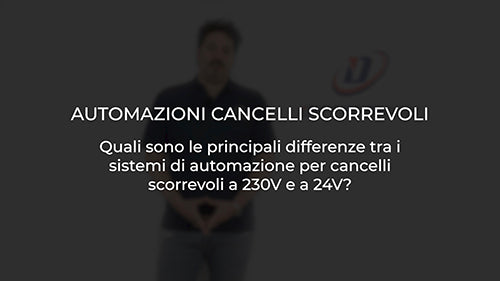What are the main differences between 230V and 24V sliding gate automation systems?
Types of Motorization
Sliding gate automation systems are mainly divided into two categories: 230V and 24V. Choosing between these two types of motorization is crucial to ensure optimal gate operation.
Characteristics of 230V Systems
230V motorization systems are typically more powerful and suitable for large and heavy gates. Here are some of their main features:
- High Power: Ideal for heavy gates and high usage frequency.
- Easy Installation: Usually require a direct electrical connection to the household network.
- Reliability: Greater operational stability in adverse weather conditions.
Characteristics of 24V Systems
24V motorization systems are generally considered safer and more versatile. They are suitable for residential installations and small businesses. Their features include:
- Safety: Low voltage reduces the risk of electric shocks.
- Energy Efficiency: Reduced energy consumption, useful for frequently used gates.
- Optimal Performance: Smooth and quiet operation is guaranteed even under stress conditions.
Factors for Automation Choice
The decision on which automation system is more suitable depends on an analysis of some key factors:
- Gate Weight: Heavy gates require 230V motorization.
- Gate Size: Larger gates may need the higher power of 230V units.
- Usage Frequency: For intensive use, 230V is often preferred; for sporadic use, 24V is sufficient.
Final Considerations
In summary, the main differences between 230V and 24V sliding gate automation systems mainly concern power, safety, and energy efficiency. It is essential to evaluate your gate and its specific needs before making an informed choice. Choosing the right system will ensure not only reliable operation but also greater longevity of the automation system.

